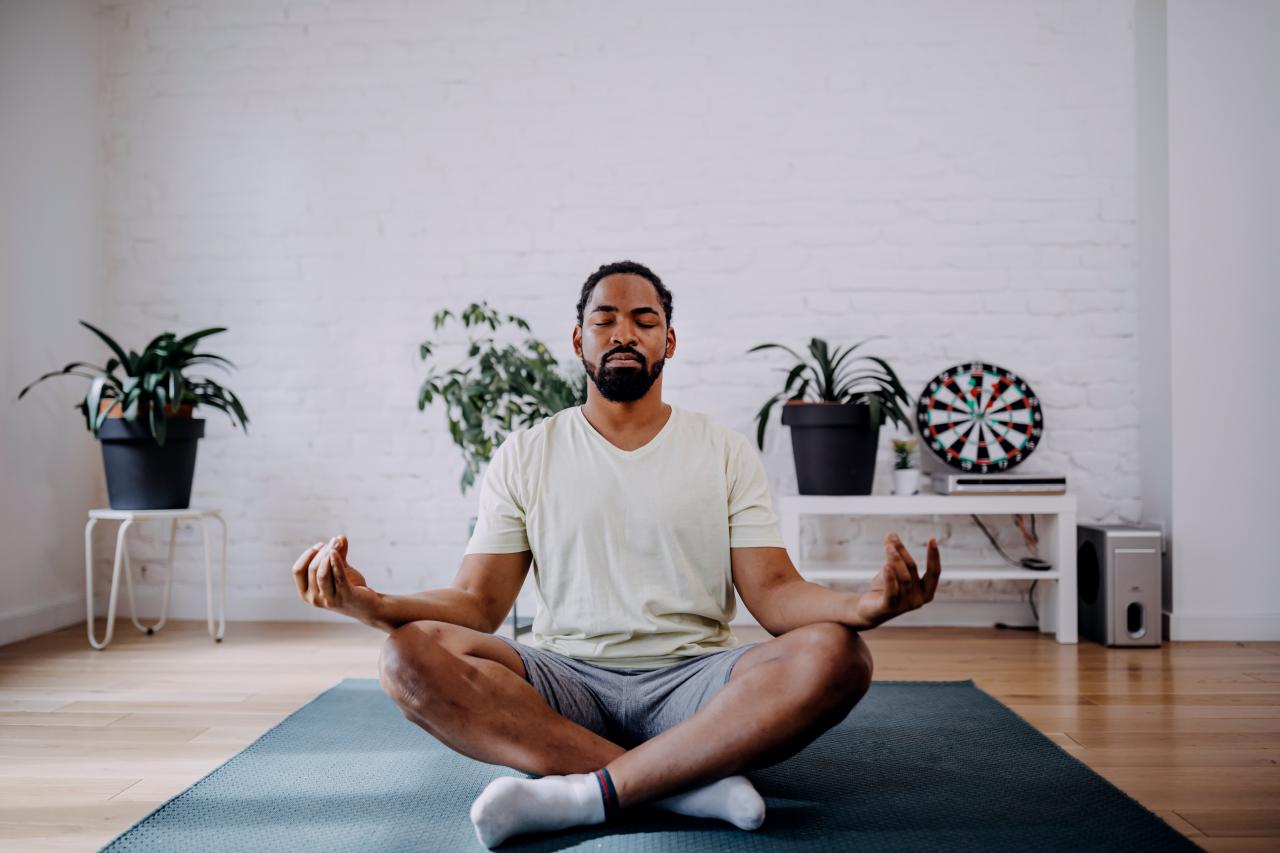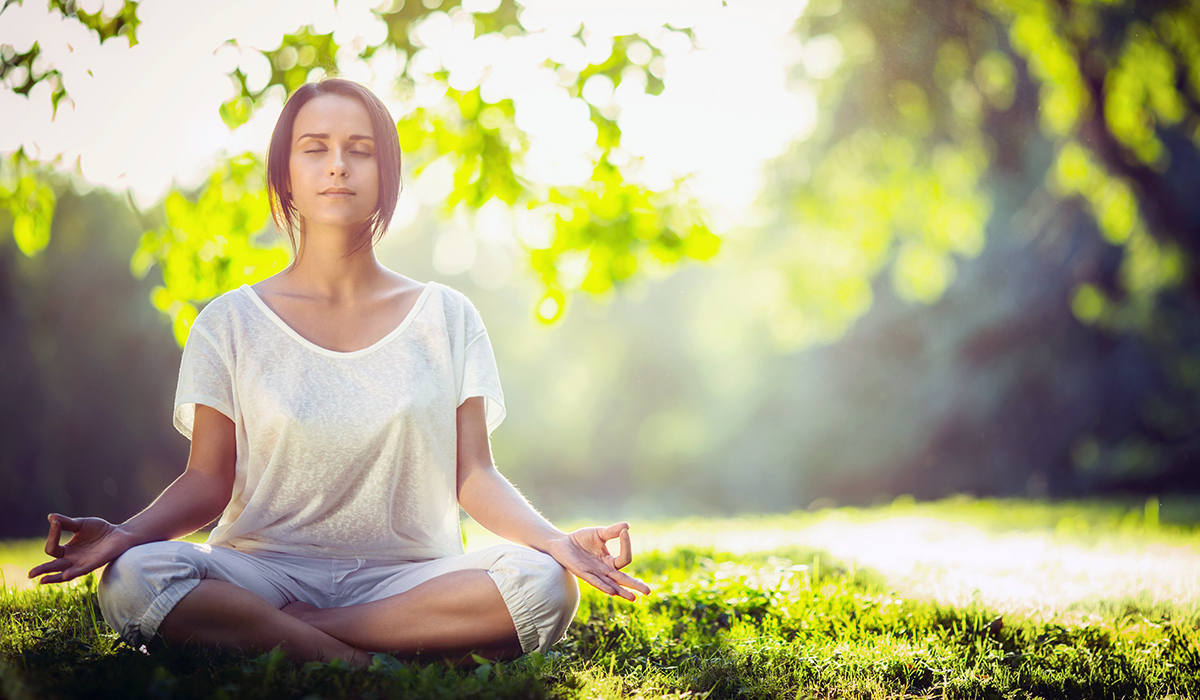Embarking on the journey of how to meditate for happiness opens a pathway to enhanced emotional well-being and inner peace. Meditation has long been revered as a powerful tool to cultivate joy, balance, and resilience in daily life. By understanding the scientific and psychological foundations of meditation, individuals can unlock the potential to experience lasting happiness through dedicated practice.
This guide offers practical steps to prepare, various techniques to practice, and strategies to overcome common challenges. It also explores ways to deepen your meditation experience and integrate happiness-boosting activities into your routine, making the pursuit of joy both accessible and sustainable.
Understanding the Connection Between Meditation and Happiness

Meditation has been practiced for thousands of years across various cultures, primarily as a tool for spiritual growth and mental clarity. In recent decades, scientific research has increasingly highlighted its role in enhancing emotional well-being and fostering happiness. Regular meditation can serve as a powerful means to cultivate a positive mindset, reduce stress, and improve overall life satisfaction.
By engaging in consistent meditation practices, individuals can influence their brain chemistry, emotional responses, and psychological resilience. This connection between meditation and happiness is supported by a growing body of empirical evidence that demonstrates tangible benefits on mood and mental health. Understanding the mechanisms behind these effects allows us to appreciate how meditation can be a vital component of a happy and balanced life.
Scientific Research Supporting Meditation’s Effects on Mood Improvement
Numerous studies have provided compelling evidence linking meditation to improvements in mood and emotional health. These studies often employ neuroimaging and biochemical analyses to observe changes in brain activity and chemical levels associated with positive emotional states.
Research published in reputable journals indicates that regular meditation can lead to increased activity in regions of the brain associated with positive emotions, such as the prefrontal cortex, and decreased activity in areas linked to stress and anxiety, such as the amygdala. For instance, a landmark study conducted by neuroscientists demonstrated that participants who engaged in mindfulness meditation for just eight weeks showed a significant reduction in symptoms of depression and anxiety, along with enhanced feelings of happiness and well-being.
Psychological Mechanisms Activated Through Regular Meditation Practices
Consistent meditation activates several psychological mechanisms that contribute to elevated mood and emotional stability. These include:
- Neuroplasticity: Meditation promotes the rewiring of neural pathways, fostering more positive thought patterns and emotional responses over time.
- Stress Reduction: By engaging the relaxation response, meditation decreases cortisol levels and alleviates the physiological effects of stress, which are often linked to negative mood states.
- Emotion Regulation: Meditation enhances the ability to observe and regulate emotions without immediate reactivity, leading to greater emotional resilience and a sense of inner calm.
- Enhanced Mindfulness: Cultivating present-moment awareness helps individuals appreciate daily experiences more fully, reducing rumination and increasing feelings of contentment.
These mechanisms work synergistically to create a mental environment conducive to happiness. By regularly practicing meditation, individuals reinforce these beneficial changes, making positive emotional states more accessible and sustained over time.
Preparing for a Meditation Session Focused on Happiness

Creating the right environment and mindset is essential to maximize the benefits of a meditation session dedicated to cultivating happiness. Proper preparation helps in fostering a peaceful state of mind, ensuring that the practice is both effective and enjoyable. By establishing a calm setting, selecting suitable tools, and calming the mind beforehand, practitioners can deepen their experience and invite more joy into their lives.
Thoughtful preparation involves attention to physical surroundings, mental readiness, and the use of supportive aids that reinforce relaxation. These steps create a nurturing space where meditation can flourish, helping individuals to connect more profoundly with feelings of happiness and contentment.
Creating a Peaceful Environment
Establishing a serene space is fundamental to effective meditation focused on happiness. An environment free from distractions allows practitioners to fully immerse themselves in the practice. The following steps help in cultivating a tranquil atmosphere:
- Choose a quiet location that is away from noise and interruptions. This could be a corner of a room, a dedicated meditation space, or a peaceful outdoor setting.
- Ensure the space is tidy and free of clutter, as a cluttered environment can be mentally distracting.
- Opt for soft, natural lighting or dimmed lights to promote relaxation. Using candles can add a gentle, soothing glow.
- Maintain a comfortable temperature to prevent discomfort during the session.
- If possible, include elements of nature such as plants or natural materials to foster a sense of harmony and calm.
Creating these conditions helps in anchoring your focus inward, promoting a sense of safety and openness necessary for cultivating happiness through meditation.
Selecting Appropriate Meditation Tools and Aids
The right tools can enhance comfort and concentration during meditation. Selecting aids that foster a sense of tranquility and support your posture can significantly improve your experience:
- Cushions and Mats: Use a supportive cushion or meditation mat that elevates the hips, maintains proper spinal alignment, and reduces physical discomfort. A firm but comfortable cushion allows for prolonged sitting without strain.
- Seating Options: For those who prefer sitting on a chair, choose a chair with good back support. Ensure your feet are flat on the ground, and your hands rest comfortably on your lap.
- Calming Music or Sounds: Soft instrumental music, nature sounds, or gentle ambient noise can help mask external disturbances and foster a peaceful atmosphere. Keep volume low to avoid distraction.
- Essential Oils or Incense: Aromatherapy can uplift mood and promote relaxation. Use lavender, chamomile, or sandalwood scents sparingly to avoid overpowering the senses.
- Eye Coverings: A soft eye pillow or cloth can block out visual stimuli, helping to deepen focus and facilitate inward attention.
Choosing tools that resonate with personal preferences and comfort levels enhances the meditation experience, making it easier to connect with feelings of happiness.
Calming the Mind Before Starting Meditation
Preparation extends beyond physical environment; mental readiness is crucial. Engaging in calming routines prior to meditation helps clear mental clutter and primes the mind for positive engagement:
- Practice gentle breathing exercises or deep diaphragmatic breathing to induce relaxation and reduce stress. For example, inhale slowly through the nose for a count of four, hold for four, and exhale through the mouth for four.
- Engage in light stretching or gentle movement to release physical tension accumulated during daily activities.
- Set a clear intention or affirmation related to happiness. For instance, silently repeat, “Today, I invite joy and gratitude into my life.”
- Avoid stimulating activities such as checking electronic devices or engaging in stressful conversations immediately before meditation, as these can hinder mental calmness.
- Spend a few minutes in mindful awareness, observing your breath or surroundings without judgment, to transition smoothly into the meditation session.
“A calm mind is the fertile ground where happiness can grow.”
Implementing these routines helps in lowering mental barriers, fostering an open and receptive state that is conducive to deepening your meditation practice focused on happiness.
Techniques for Meditating to Cultivate Happiness
Practicing various meditation techniques tailored to fostering happiness can significantly enhance emotional well-being and create a more positive outlook on life. Each method offers unique approaches to nurturing joy, compassion, and gratitude, enabling individuals to integrate these practices into their daily routines effectively.
Understanding and applying different meditation techniques allows for a personalized approach to cultivating happiness, addressing specific emotional needs and preferences. Whether through fostering self-compassion, gratitude, or visualization, these methods can serve as powerful tools for achieving lasting inner contentment.
Comparison of Meditation Methods for Happiness
Different meditation techniques offer various pathways to happiness, each emphasizing specific mental states and emotional qualities. The following table compares mindfulness, loving-kindness, and visualization meditation to highlight their unique features and benefits.
| Aspect | Mindfulness Meditation | Loving-Kindness Meditation | Visualization Meditation |
|---|---|---|---|
| Focus | Present moment awareness | Wishing well-being and happiness for oneself and others | Imagining positive scenarios or outcomes |
| Primary Emphasis | Acceptance and non-judgment | Compassion, warmth, and kindness | Creating vivid mental images to evoke positive emotions |
| Benefits | Reduces stress, enhances emotional regulation, fosters contentment | Increases feelings of connectedness, compassion, and joy | Boosts optimism, motivation, and happiness through mental imagery |
| Suitable For | Individuals seeking calm and present-moment clarity | Those aiming to cultivate compassion and positive feelings towards others | People who respond well to visual stimuli and imagination techniques |
Practicing Gratitude Meditation to Enhance Joy
Gratitude meditation is a powerful practice that shifts focus from what is lacking to appreciation for what is present. This approach cultivates a positive emotional state, fostering happiness and resilience. The following procedural steps guide effective gratitude meditation sessions:
- Find a Comfortable Position: Sit or lie down in a quiet space, ensuring your body is relaxed and free from distractions.
- Set an Intention: Begin with a mental affirmation, such as “Today, I choose to focus on gratitude,” to establish a receptive mindset.
- Identify Gratitude Points: Reflect on specific aspects of your life you’re grateful for, such as relationships, health, achievements, or simple pleasures like a warm cup of tea.
- Visualize and Feel: As you think about each point of gratitude, visualize it vividly and allow yourself to experience the associated positive emotions deeply.
- Silent Repetition: Mentally repeat phrases like “I am grateful for…” or “Thank you for…” while maintaining the visualization and emotional connection.
- Expand the Practice: Gradually include more aspects of your life, broadening your sense of thankfulness and joy.
- Conclude Gently: End the session with a few moments of silence, acknowledging the feelings of gratitude and happiness generated.
Regular practice of gratitude meditation can rewire the brain’s emotional pathways, making positive feelings more accessible and sustainable over time.
Integrating Positive Affirmations into Meditation for Happiness
Positive affirmations serve as mental tools that reinforce self-belief, optimism, and happiness. When incorporated into meditation, they amplify the benefits of mindfulness by creating a focused environment for cultivating empowering thoughts. The integration process involves the following steps:
- Choose Your Affirmations: Select phrases that resonate with your goals for happiness, such as “I am worthy of happiness,” “Joy flows freely through me,” or “I attract positivity.”
- Set an Intention: Begin your meditation by establishing the purpose of fostering happiness through affirmations.
- Find a Comfortable Posture: Ensure your body is relaxed, and your mind is receptive.
- Practice Mindful Breathing: Take deep, calming breaths to center yourself and prepare for affirmation repetition.
- Repeat Affirmations: Silently or aloud, repeat your chosen affirmations slowly and with conviction. Focus on the meaning and allow the words to resonate emotionally.
- Visualize Positive Outcomes: Pair affirmations with mental imagery of yourself experiencing happiness and success, strengthening their impact.
- Maintain Consistency: Incorporate affirmations regularly into your meditation routine to reinforce positive thought patterns and foster lasting happiness.
“The more you affirm positive beliefs during meditation, the more those beliefs become your reality.”
By blending affirmations with meditation, individuals can shift their internal dialogue towards positivity, thereby creating a fertile mental environment for happiness to flourish.
Addressing Common Challenges in Meditating for Happiness

Meditating to cultivate happiness can be highly rewarding, yet practitioners often encounter obstacles that may hinder progress or consistency. Recognizing these challenges and adopting effective strategies can significantly enhance one’s meditation experience and support sustained emotional well-being.These challenges are common regardless of experience level and can include wandering thoughts, impatience, emotional resistance, or difficulty maintaining a routine during stressful periods.
Addressing them proactively ensures that meditation remains a beneficial and manageable practice, especially when aiming to foster happiness.
Overcoming Wandering Thoughts and Impatience
Distraction during meditation sessions is a widespread issue that can diminish the sense of calm and hinder the cultivation of happiness. To address this, practitioners should develop gentle awareness and patience, understanding that wandering thoughts are natural and part of the process.
- Use anchoring techniques: Focus on a specific object, such as the breath, a mantra, or a visual image, to help stabilize attention and reduce mind wandering.
- Practice non-judgmental awareness: When thoughts drift away, acknowledge them without self-criticism and gently bring focus back to the chosen point of attention.
- Set realistic expectations: Recognize that impatience may arise, especially when progress feels slow. Reminding oneself that consistency over time yields results encourages perseverance.
- Incorporate brief mindfulness pauses: Short, frequent mindfulness moments throughout the day can improve focus during longer meditation sessions.
Maintaining Consistency in Happiness-Focused Meditation Routines
Building a sustainable meditation routine requires deliberate planning and motivation. Consistency ensures that the benefits of happiness cultivation are cumulative and long-lasting.
To maintain regular practice, consider these approaches:
- Establish a dedicated practice time and space: Designate a specific time each day and a quiet area to create a sense of routine and expectation.
- Set achievable goals: Start with short sessions, such as five to ten minutes, gradually increasing duration as comfort grows to prevent burnout or frustration.
- Use reminders and cues: Alarms, sticky notes, or integrating meditation into existing routines (e.g., after brushing teeth) can reinforce daily practice.
- Track progress: Keeping a journal or using meditation apps can help monitor consistency and motivate continued effort.
Adapting Practices During Stressful or Emotional Times
During periods of high stress or intense emotions, meditation for happiness may seem challenging, yet these times are often when it is most needed. Adjusting meditation techniques can help manage emotional upheaval effectively.
Effective strategies include:
- Practice self-compassion: Recognize that emotional fluctuations are natural and avoid self-criticism for difficulties in meditation sessions during stressful periods.
- Use guided meditations focused on compassion and acceptance: These can provide structure and reassurance when emotional resilience is low.
- Shift focus to grounding exercises: Techniques such as body scans, progressive muscle relaxation, or mindful breathing can help stabilize emotions and foster a sense of safety.
- Limit session length during intense times: Shorter, more frequent practices may be more effective than longer sessions when emotional energy is depleted.
- Incorporate emotional release practices: Techniques like expressive writing or visualizing emotional release can complement meditation, promoting emotional clarity and happiness.
Enhancing Meditation Practice for Lasting Happiness
Deepening your meditation practice is essential for transforming fleeting feelings of happiness into a sustained sense of well-being. By integrating intentional techniques and complementary activities, individuals can cultivate a more resilient and enduring state of happiness that extends beyond meditation sessions. Establishing effective routines and combining various practices can significantly amplify the positive effects of meditation, fostering long-term emotional balance and contentment.
Incorporating additional happiness-boosting activities alongside meditation can create a holistic approach to well-being. These practices reinforce positive mental states, help embed feelings of happiness into daily life, and promote a sustained sense of inner peace. Developing a structured daily routine that blends meditation with other mindful and gratitude-focused activities can lead to more profound and lasting happiness over time.
Deepening Meditation Experiences for Sustained Happiness
To deepen meditation experiences and sustain feelings of happiness, it is beneficial to explore advanced mindfulness techniques and cultivate consistency. Regularly engaging in longer meditation sessions, such as extending practice time from 10 to 30 minutes or more, can help reinforce emotional stability and deepen the sense of inner peace. Additionally, focusing on specific themes like compassion, gratitude, or loving-kindness during meditation enhances the emotional benefits, making happiness more resilient.
Practicing visualization techniques, where one imagines positive outcomes or visualizes oneself embodying happiness, can further strengthen the meditative impact. Maintaining a gentle, non-judgmental attitude toward oneself during practice fosters a safe environment for emotional exploration, allowing the individual to access deeper states of contentment. Consistency and patience are key, as the benefits compound over time, leading to a more persistent sense of happiness and well-being.
Combining Meditation with Other Happiness-Boosting Activities
Integrating meditation with other daily practices can significantly enhance overall happiness. Activities such as gratitude journaling, mindful walking, and engaging in acts of kindness complement meditation by actively reinforcing positive emotions and fostering a sense of connection. These activities serve to anchor the feelings cultivated during meditation into everyday life, making happiness more accessible and lasting.
Gratitude journaling involves writing down daily moments of appreciation, which shifts focus toward positive aspects of life and cultivates an optimistic outlook. Mindful walking encourages present-moment awareness in physical activity, reinforcing calmness and joy. Participating in community service or acts of kindness stimulates feelings of purpose and interconnectedness, strengthening emotional resilience. Combining these practices creates a comprehensive approach, nurturing happiness from multiple angles and embedding it into daily habits.
Sample Daily Schedule for Cultivating Happiness through Meditation
Implementing a structured daily routine that incorporates meditation and related activities can optimize happiness cultivation. An example schedule might include:
| Time | Activity |
|---|---|
| 6:30 AM | Morning gratitude journaling: Write three things you are thankful for to set a positive tone for the day. |
| 7:00 AM | Guided meditation focusing on loving-kindness or compassion lasting 10-15 minutes. |
| 12:30 PM | Mindful walking during lunch break, paying close attention to sensations, sounds, and sights. |
| 6:00 PM | Evening meditation session emphasizing reflection on positive experiences and feelings of happiness, lasting 15-20 minutes. |
| 9:00 PM | Reflection and gratitude journaling: noting moments of joy experienced throughout the day. |
By adopting such a routine, individuals can integrate meditation seamlessly into daily life, reinforcing happiness through consistent practice and complementary activities. Over time, this structured approach fosters a resilient happiness that endures beyond individual sessions, enriching overall well-being and life satisfaction.
Epilogue

In conclusion, learning how to meditate for happiness is a transformative process that positively impacts both mind and body. Consistent practice, combined with mindful adjustments, can lead to enduring feelings of joy and fulfillment. Embrace these techniques and integrate them into your daily life to enjoy the profound benefits of genuine happiness.